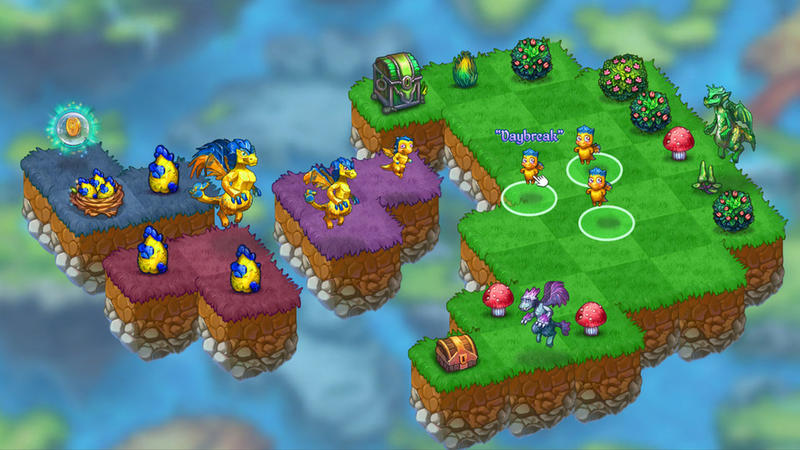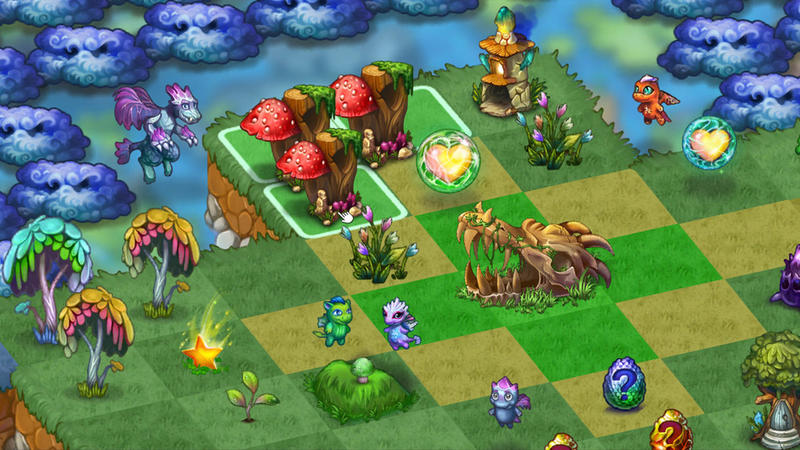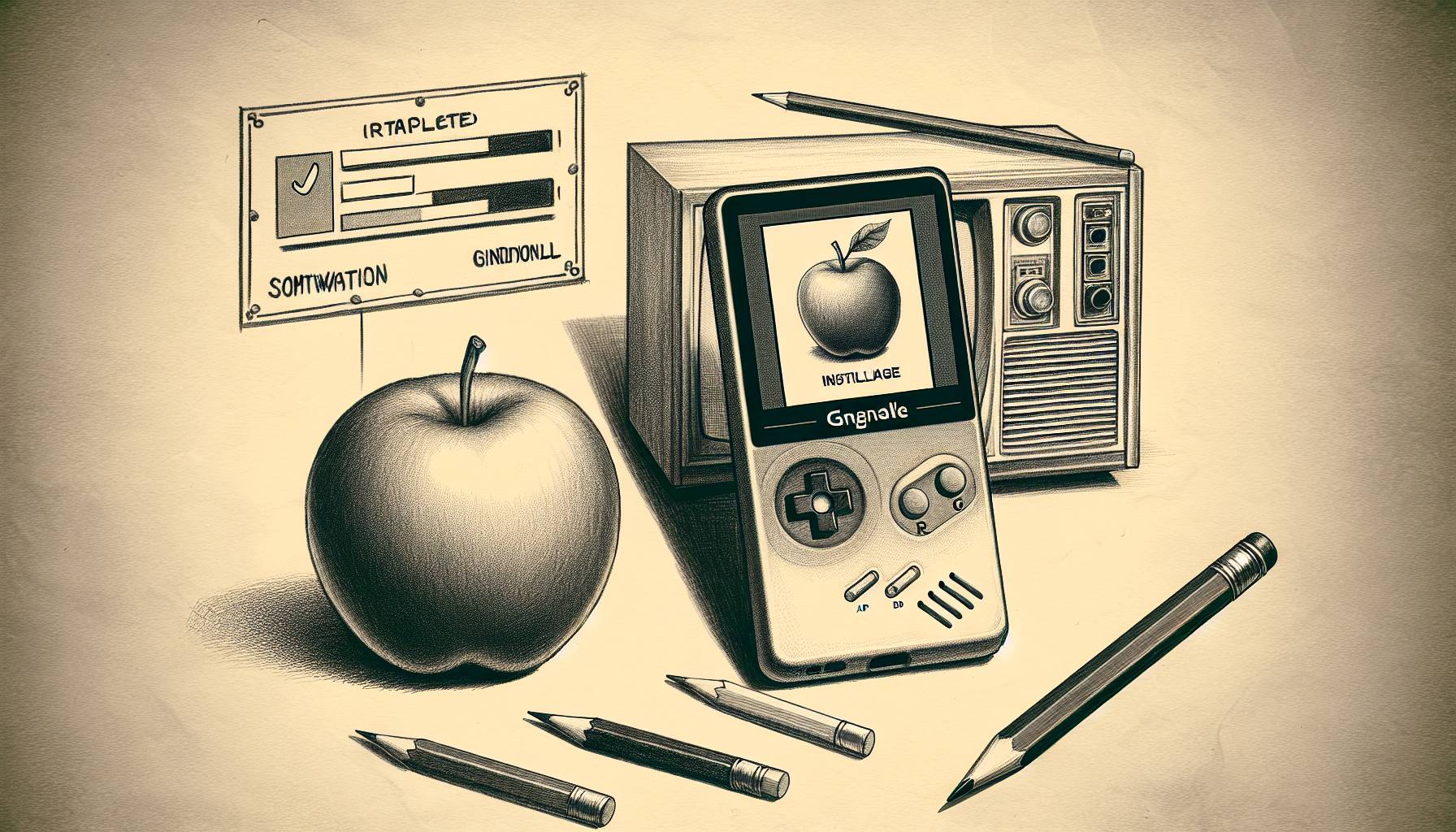[symple_box style=”boxsucces”]
Appolicious: From the trailer of the game, Merge Dragons seems to be highly unique in concept. Can you tell us a bit about the game and what inspired the idea?
[/symple_box]
Ray Mazza: This may sound crazy, because no other games are like this, but stick with me because it’s quite fun: Imagine a game like Dragonvale, except instead of buying new objects from a catalog, your dragons are flying around harvesting seeds and coins and other things and dropping them right on the land for you. Then you can drag three of the same object next to each other to combine into a single better object: three seeds merge into a sapling, three small dragon homes merge into a larger dragon home, three crimson eggs hatch a crimson dragon, and so on. The more you merge, the better objects you create, and the better things the dragons can harvest for you, like more valuable treasures so you buy more dragon eggs, and stronger “life essence” you can use to heal the land for more space – that’s the main loop. And you can merge the dragons to get better dragons, of course!
I can trace the original seed of inspiration back to my work on The Sims Social and SimCity Social. Both great games, but one problem they shared was that players would build out their houses and their cities and then run out of room. And then what would they do? Often they would stop playing. That was the end game. We couldn’t easily give players extra houses or extra city maps, and nobody wanted to delete portions of their existing houses or cities, so they just stopped playing. Major design problem.
At the time, I was also very into Triple Town, a puzzle game where you carefully place objects on a small grid to make matches and merge them into nicer objects to see how many points you could get before running out of space. Eventually, a lightbulb went off in my head – what if you could combine the merging mechanic from Triple Town with a free-form collection and building game? Then players wouldn’t easily run out of space – they’d always be combining objects to create better things and at the same time be emptying out space on their landscape! Those concepts struck me as a perfect blend of genres.
But that was just the seed of an idea. When I left Maxis, I had to spend the next 3 months figuring out what that actually meant through prototypes – what would the goal be? Would it have levels, a camp, or both? How many objects would it need and what would they do? What’s the theme? And so on.
Being a highly unique concept, I’m fully aware of the risk that the gameplay may be too difficult to explain with marketing materials. On the other hand, with such a crowded mobile game space, I consider it a risk not to have a highly unique concept that can help you stand out amidst the clones.
[symple_box style=”boxsucces”]
Appolicious: In countries where the game is available, how are initial reactions and what elements have been the most captivating for players?
[/symple_box]
Ray Mazza: Reactions have varied from “It’s not for me,” to “You can’t make me stop playing!”
The players who don’t like it tend to cite a lack of pressure and strategy. It’s definitely not for hardcore gamers. It’s meant to be addictive, but relaxing. I used to have a timer in levels, but removed it because it was counter to how most testers wanted to play. In fact, many times I’d watch a new player get to the point where they could win a level (by merging 3 “Gaia Statues”) but they wouldn’t do it. I’d probe, “do you know that you can win right now?” And they’d say they didn’t want to yet because they wanted to keep matching other objects – usually it was to make a new discovery, like for example, what the Blue Life Flowers would become when merged.
Players often describe Merge Dragons as “zen” after they get into a state of flow, making merge after merge. The average player plays for over an hour each day, though it’s perfectly playable in 1-minute bites. Players who play long enough eventually do discover there’s quite a bit of strategy – merging 5 objects is better than 3; if you don’t collect coins right away, you can save them up to match them into higher payouts; if you match objects that include ones on dead land, it can pull objects off the dead land and instantly revive it, and so on.

Players also love the art style and the level design, but the most captivating aspect is the element of experimentation and discovery. There are over 400 objects to find, and a lot of those you just stumble across… you may see your dragons spitting fire at a dead tree, and it breaks into logs. So you merge the logs a few times. Eventually they turn into a little cabin with bushes, and it spawns other bushes over time. Then you merge the bushes to see how nice they’ll become. And you realize if you tap the bushes, they sometimes drop mushrooms. So you merge those… and there are over 10 levels of mushrooms to merge to. Players love finding these progressions, and the game tracks them for you in a sticker book.
One last note on discovery: As a kid, I loved finding secrets in Zelda, Super Metroid, and other NES games, those were formative for me. So I like to intentionally build discovery and secrets into my games. In Merge Dragons, there are hidden levels scattered around the world map… can you find them?
[symple_box style=”boxsucces”]
Appolicious: With 3 years in development, have you faced any major difficulties when developing the app? If so, how did you overcome it and how has it altered Merge Dragons?
[/symple_box]
Ray Mazza: I developed Merge Dragons alone, part-time for a little while, but mostly on nights and weekends as a side project (plus I have a 3 ½ year old… who loves playing Merge Dragons, by the way). It was an insane amount of work to sign up for. Normally at this point in an interview, you’d get a quote from a dev saying, “it always takes longer than expected. Scope aggressively, aim small.” That’s all wise, and true. I’ve said it many times.
But… I’m going to turn that on its head because I’ve made a realization: You can complete huge projects as long as you have an organized plan that you regularly chip away at. It may take years, but if you keep working and crossing tasks off your list, you’ll get there. This is one of the “luxuries” of a side project – you aren’t beholden to a budget or a fixed ship date – you can keep working on it until it’s finished, however long that takes. I put all my features and tasks in a spreadsheet organized top-down by priority, and worked my way down the list, adding and cutting where necessary.
The most interesting difficulty I avoided was path planning – getting little creatures from one place in the world to another. Originally, I’d wanted the game to be monsters with the diversity of Pokémon, but that meant I’d have to have them walk around and avoid objects, and be smart about it. That’s not easy to implement, especially to have it look intelligent. Plus, legs are hard to animate (for me, at least). So I scrapped that concept and made dragons the star of the game because flying is easy! No need to avoid objects or make walking animations. That saved a ton of time, and determined the visual theme of Merge Dragons.

Overall, lone development is not hard so much as it is time-consuming. The hardest part for me is what I’m doing right now: finding exposure. Maxis had a giant marketing machine. I’m an introvert, trying to be heard in a time where tens of thousands of games are released on app stores each month. No amount of time can overcome that. I’m doing what I can to tell people, and I’m relying on the uniqueness and incredible fun of Merge Dragons to take itself the rest of the way as people play it and share their love for it with friends and followers. If anyone reading this knows any influencers who want to stream the Merge Dragons or otherwise help, contact me! I would be forever indebted!
[symple_box style=”boxsucces”]
Appolicious: As the former Creative Director and Lead Designer of major games, how has your experience at EA/Maxis helped you in creating the game? What are some valuable lessons that you’ve been able to learn from EA/Maxis and applied them to your own game?
[/symple_box]
Ray Mazza: My experience on The Sims has been invaluable. It is such an incredible series of games and I was surrounded by veritable swarms of highly intelligent people at Maxis.
The lesson that most influenced Merge Dragons is about “hidden depth.” Hidden depth can make a game powerfully compelling. And more accessible. Rather than trying to force all of your game’s depth to its surface through extra UI, long on-rails tutorials, and front-loading all the cool gameplay – which can turn potentially fun concepts into information overload and chore-like gameplay – go easy on the player, and let them discover your depth.
There’s a general fear (especially in AAA) that if you don’t put all the cool stuff early in your game, a lot of players will get bored and stop playing before they ever experience it. But you actually want to draw that out into a steady stream of fun discoveries, which lets players enjoy each one and savor it like a delicious bite of a food.
I learned a lot of this from The Sims, where new players expect a simple game about eating, peeing, and doing everyday things. But the more you play, the more you discover all these little hidden systems that can sweep you away into the late hours of the night, whether it’s fishing to fertilize your gardens, collecting exotic butterflies to keep as pets, or sadistically walling all of your male co-workers into your house so they starve and you can maybe get some female co-workers for a change – they’re all parts of the game players can discover for themselves at their own pace. We never force you into any of that. If we did, it would be far less rewarding.
Merge Dragons, for example – where Dragons is in the name of the game – you don’t find dragons until level 5. That gives players time to understand the basic concept of merging Life Flowers into better Life Flowers, and how doing that can heal the land. Then suddenly dragons come along and you’re like, “Oh, wow, look at this! They’re getting new things for me!”

I have a chart where I’ve planned out what concepts are introduced in each level, when the new objects and new types of dragons appear, the way the land art changes, when and how often enemies will appear, and so on. It’s important to have a macro design like this to make sure you are spreading compelling aspects over a significant amount of in-game time.
Also, as I mentioned earlier, I leave a lot of the discovery of interaction to players. A player may be happily tapping chests to open them and collect their loot for a long time before they stop and think, “Hey, there are 3 of the same chests here… CAN I MATCH THEM?!?” and when they try and it works and gives them a better chest, that’s a hugely satisfying moment. It’s fine to hint at these things. But a tutorial that stops the game and forces players to do it robs them of satisfying discovery.
Lastly, at Maxis we had a culture of prototyping to test out designs before scaling up a team. We prototyped all the major gameplay of The Sims 3 in a 2D prototype, and it helped us understand what sort of gameplay was fun in an open world simulation about normal life. I took the same approach with Merge Dragons – I built a few levels and the camp area, and used art I grabbed from other games. I tested it, redesigned gameplay and interaction, and retested. (You need to expect negative feedback early, but that’s good. Get discouraged early, not when it’s too late.) Rinse and repeat for months until finally players couldn’t put it down. At that point I could spend money on art and time on level design without being worried about throwing it away. Prototyping and testing early can save massive amounts of time and money, as well as give you a boost of energy when you finally see players addicted to your game, and it’s not even close to done yet.
[symple_box style=”boxsucces”]
Appolicious: Where do you see the future of Merge Dragons in the upcoming months? Are there any major milestones that players should anticipate in the near future?
[/symple_box]
Ray Mazza: I will look to the community to figure out where to take Merge Dragons next. Maxis also taught me the importance of having tight relationships with your players. Your community is the life of your game. I’ve put a “Discuss” button directly in the HUD in Merge Dragons so that any player can easily go and chat about the game in the forums and make suggestions. So I will redirect this question to the players: where do you want to see Merge Dragons go in the future?
That said, you can certainly expect new levels that use objects and types of dragons you haven’t seen in other levels yet. For example, you can’t find Prism Flowers or Dragon Trees in any of the current levels, nor can you find Roc Dragons or Gargoyle Dragons in them. I’ve been saving these for the future.
[symple_box style=”boxsucces”]
Appolicious: With many puzzle-based games available on the App Store, what are some differentiating aspects of Merge Dragons that prospective players should know?
[/symple_box]
Ray Mazza: First, I’d like to be bold and say that this will be the most satisfying feeling of matching objects that you’ve ever experienced in a game. It just feels great to combine them into wonderful things.
Second, Merge Dragons takes the fun of match-3 games, and puts it directly into the game world where other things are happening. Seeds sprout into plants. Dragons spit fire at stones to crumble them into pieces. “Zomblins” come out of caves to wreak havoc. And you’re making merges amongst all of this. No other game has done that.
You’re not playing because you want a high score or to beat levels – although those aspects are there – you’re playing to see what objects you’ll discover through merging. I challenge you to merge your way to the best objects… can you find the best Life Tree? Can you make Stonehenge? Some objects have so many levels that there will almost always be something more for you to discover…
[symple_box style=”boxsucces”]
Appolicious: We’d like to give a special thanks to Ray for being a guest in this interview. Though currently not available worldwide, the app is scheduled for a complete rollout in early September of this year. If Merge Dragons is available in your country, be sure to check it out.
[/symple_box]













